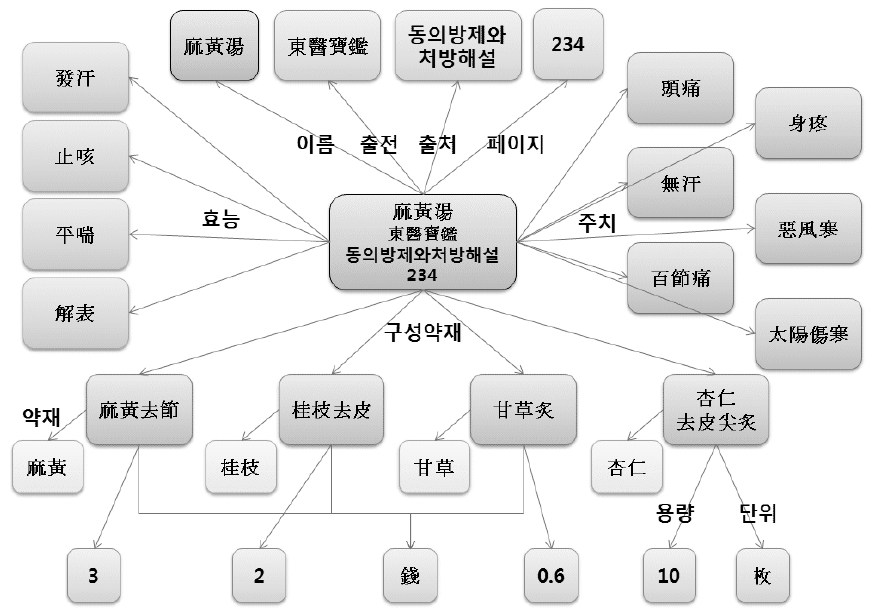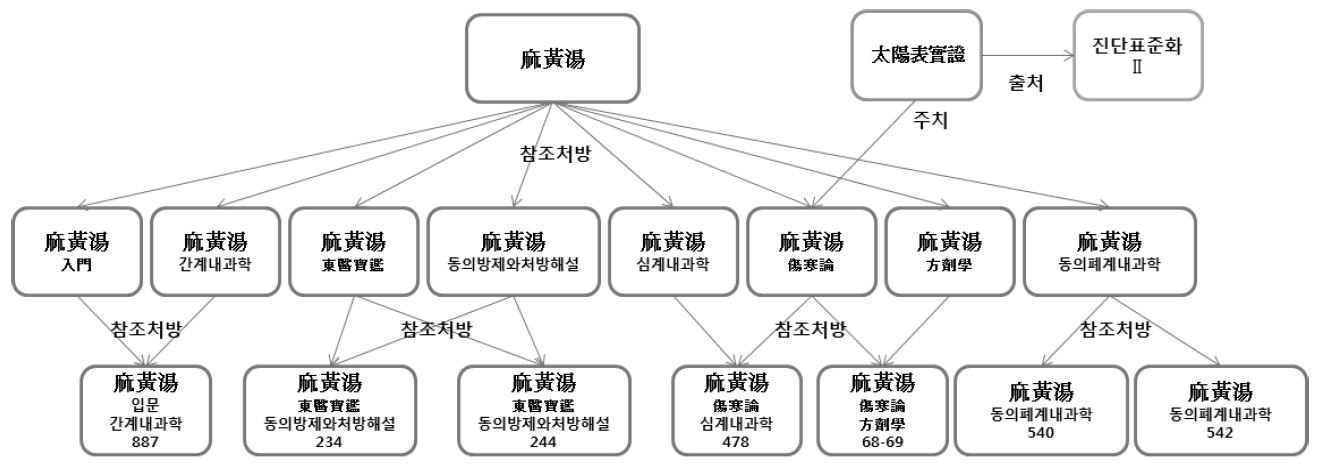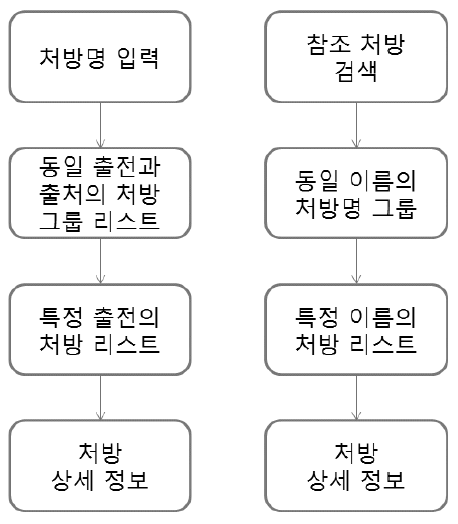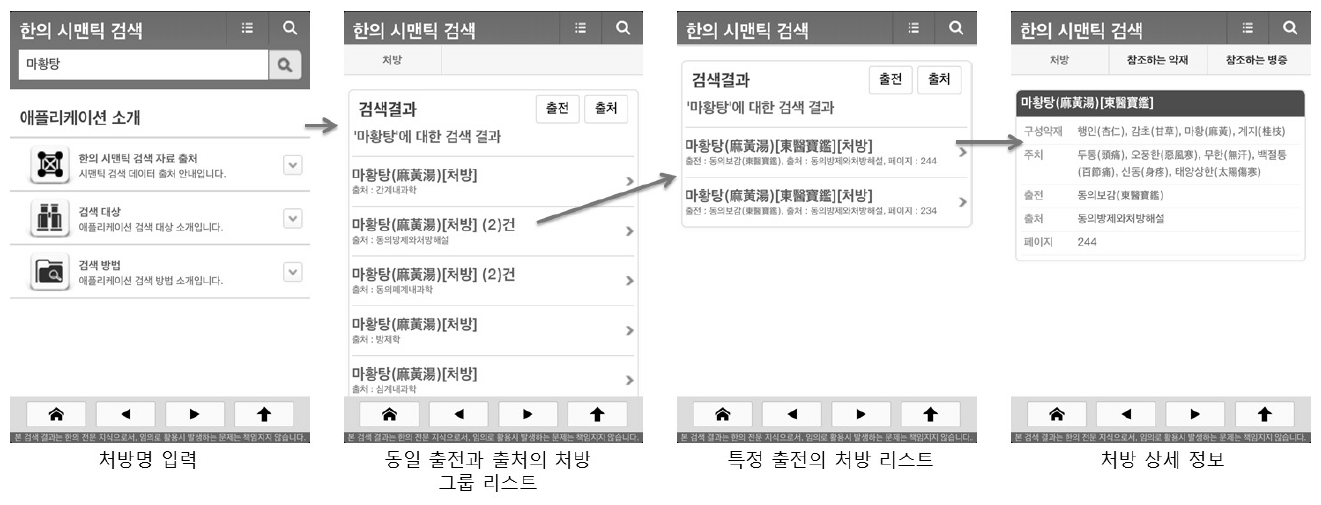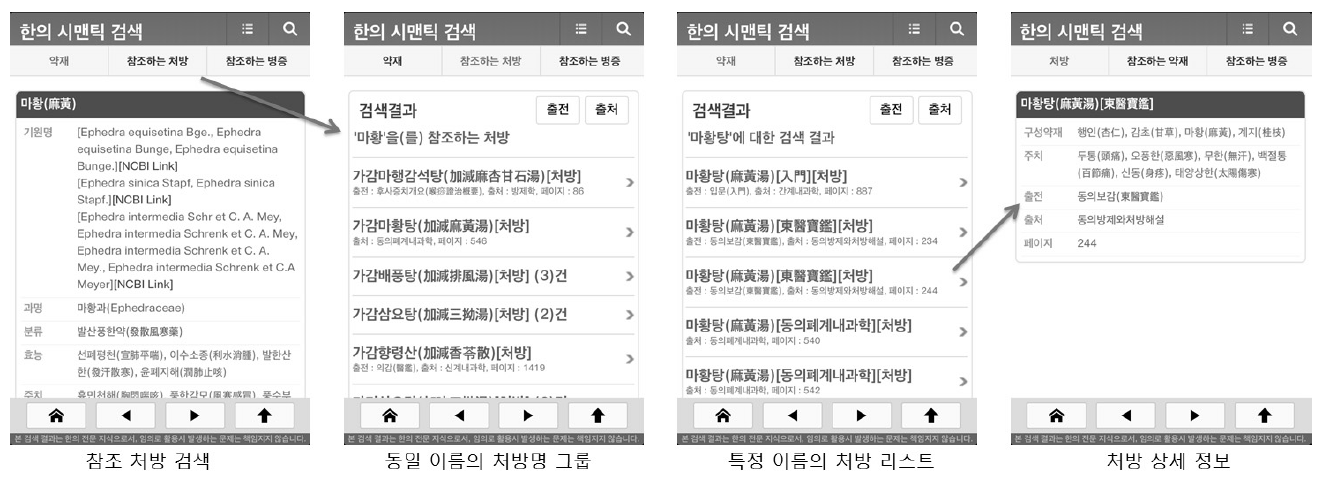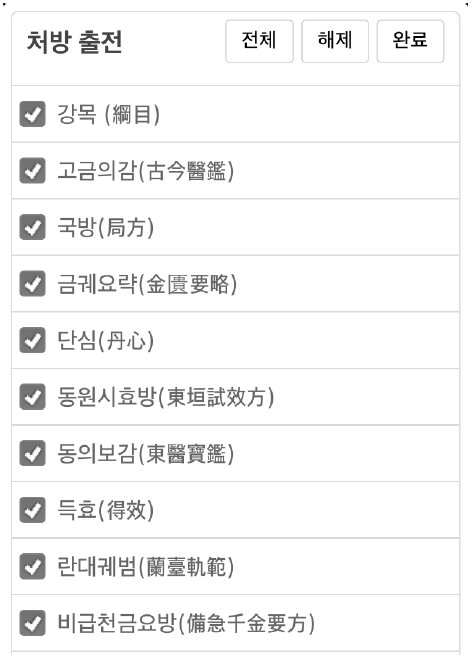Models and Representations of Formulas in Korean Medicine Information Systems
Article information
Abstract
Objectives
We propose a method to model and represent formulas in Korean medicine information systems.
Methods:
All the formulas were codified in the form of graphs representing the relationship between a formula and its constituents. To identify a unique formula in a graph, the formula’s name, the book in which the formula was written, the book where the formula was extracted, and the page number in the extracted book are used. All the formulas and the relationship between formulas are modelled as an ontology based on graphs.
Results:
A formula search system was constructed using our ontology, which can represent formula information efficiently by grouping and filtering of formulas. Our formula model was also constructed as a mobile application.
Conclusions:
The information in our formula search system depends on our ontology. However, our model or our search scenarios could be extended according to formula information.
